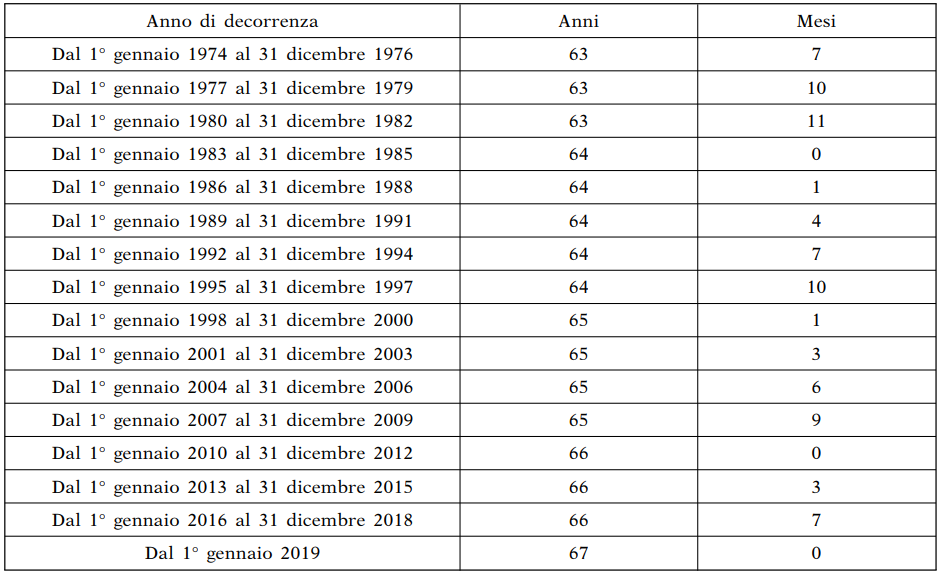We are once again talking about cuts to golden pensions. On Wednesday 19 September, the Movimento 5 Stelle presented a bill (also signed by the League) which provides for the recalculation of contributions for benefits exceeding 4.500 euros net per month. In the government contract, the ceiling was set at 5 thousand euros, a quota reaffirmed yesterday also by Giancarlo Giorgetti, Northern League undersecretary to the Prime Minister: "Those who take a pension of more than five thousand euros without having paid contributions cannot see why they should take more ”.
But the text - which will go to the Labor Committee in the Chamber next week - speaks of 4.500 euros. And the expected cut is not linear: the recalculation of the remuneration portion of the checks will have a different weight based on when the social security treatment began (the reform distinguishes between those started before 2019 and before 1996) and the age that the pensioner had when he stopped working.
The extent of the cut will be quite relevant. Estimates speak of an average drop of 3% gross (equal to 1-2% net, depending on the case) for each year of early retirement with respect to the age established by the current rules. In practice, depending on the years before the age of 67, those who retire with a "gold" check in 2019 will be able to lose from approximately 2 to 14% net. For those who are already retired, however, the recalculation takes place by applying the life expectancy mechanism in reverse: for example, for those who stopped working in 2000, the reference age on the basis of which to calculate the advance payment is not 67 years but 65.
In these cases, "the remuneration shares are reduced to the result of the ratio between the transformation coefficient in force at the time of retirement relating to the age of the insured on the same date - reads the bill - and the transformation coefficient corresponding to the age shown in table A attached to this law for each year of commencement of the pension. In the event that the age at the start of the treatment is greater than 65 years, the transformation coefficient relating to this age must be used”.
However, a safeguard clause will prevent checks from falling below €4.500 net per month.The reduction will also affect union leaders – who thanks to a 1996 law could increase their allowance up to 66% by paying an additional contribution shortly before leaving their jobs – and the workers of the Quirinale, Parliament, Government, Constitutional Court, Court dei Conti, the Council of State, the Superior Council of the Judiciary and Cnel. On the other hand, invalidity pensions, survivors' pensions, allowances to victims of terrorism or duty and members of the autonomous social security funds will be excluded.
With the money saved, the M5S intends to finance citizen's pensions, i.e. the increase of the minimum treatment to 780 euros, the same amount provided for the citizen's income.
The problem is that it doesn't add up. For Stefano Patriarca, of the Tabula study centre, the cut in gold pensions would affect 60-70 thousand people a year, producing a revenue of around 300 million. Not much, considering that Alberto Brambilla, a pension expert close to the League, quantifies the resources necessary to give the citizen's pension to all the people who today receive the minimum allowance at over 10 billion a year.
THE NUMBERS OF THE 100 QUOTA
In the meantime, some numbers are arriving from the Ministry of Labor on the key measure of the maneuver on the subject of social security, the 100 quota, i.e. the mechanism that from next year should allow people to retire when the sum of age and years of contributions reaches at least 100.
On this front, the problem is understanding what the minimum age will be and whether there will also be a minimum number of years of contributions. The most generous hypothesis is that which would allow people to retire at 62 years of age and 38 contributions, 63 years of age and 37 contributions, 64 years of age and 36 contributions and 65 years of age with 35 contributions. This scheme would allow 492 people to leave their jobs in 2019 and would cost around 8 billion.
If a minimum limit were placed on 36 years of contributions (thus excluding the possibility of retiring at 65 with 35 payments) the number of potential beneficiaries would be reduced to 450 people, who would still drop to 433, with an additional cost reduced to 7 billion, in case the bar rises to 37 years.
To further reduce the expenditure, further corrective measures are being considered. For example, recalculating the payments from 1996 onwards using the contributory method for those who make use of the 100 quota (thus cutting the check by 10-15% in most cases). Or allow a maximum of two years of notional contributions. Or allow access to quota 100 only to certain categories of disadvantaged workers.
THE HYPOTHESIS OF A SELECTIVE VAT INCREASE
The conundrum of hedging, moreover, does not concern only pensions, but the entire budget manoeuvre. “Let's draw on the deficit a bit to keep our promises,” the pentastellato leader, Luigi Di Maio, said on Wednesday from China. The Treasury, however, wants to prevent the deficit-GDP ratio from exceeding 1,6% (a percentage which corresponds to a correction of the structural deficit of 0,1%, in the absence of which Italy risks an infringement procedure European).
To this end, the technicians of the Ministry of the Economy have hypothesized to only partially sterilize the safeguard clauses on VAT, allowing the tax to rise from January 4 only on some of the goods taxed today at 10 or XNUMX%. The money thus saved would be used to lower the income tax or the tax wedge. In this way, Italy would achieve what the EU and the IMF have been asking of it for years: the shift of a part of the tax burden from labor to consumption. An approach also shared by Giovanni Tria as a professor: "For over a decade I have believed that Italy must rebalance the relative weight of direct and indirect taxes by shifting revenue from the former to the latter", said the minister of Economy last May.
However, this perspective was denied on Thursday morning by Di Maio: “It is fake news – said the pentastellato deputy premier – there will be no increase, this government will not allow money to enter the door to go out the window. We have promised that we will avoid the VAT increase and we will do it”.






